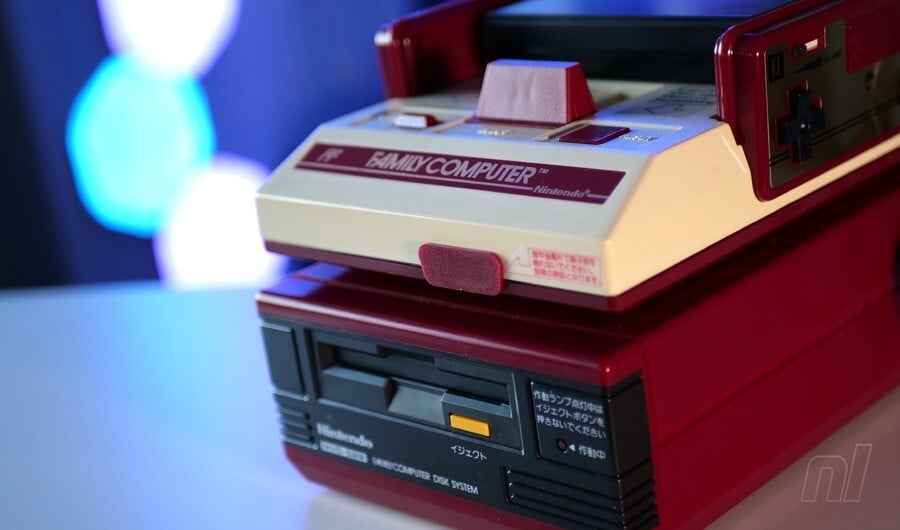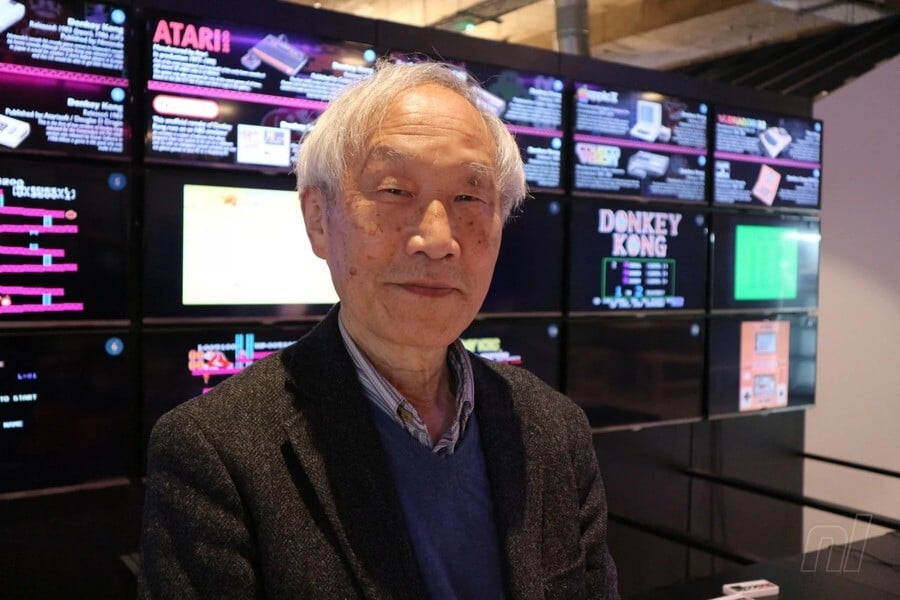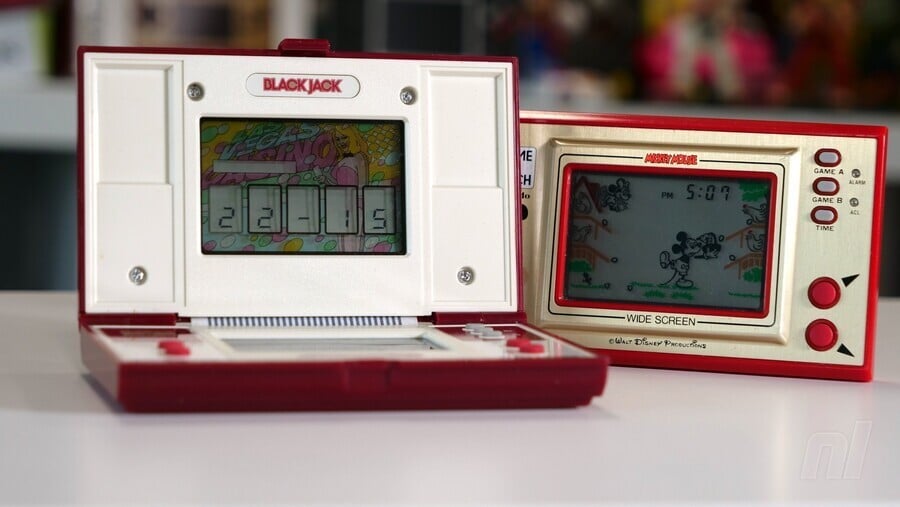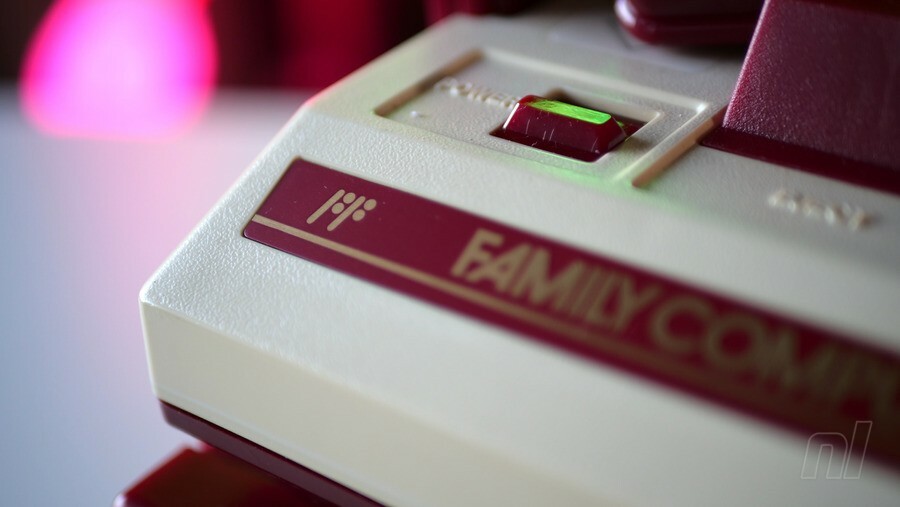
The sad news broke today that Masayuki Uemura, the lead architect on the NES and Super NES consoles, died on 6th December at the age of 78. Uemura was an instrumental figure in the formation of Nintendo as the video game company we know and love today — his hardware design credits date back to the 1970s, and he also has a fair list of software producer credits to his name. It's no exaggeration to say that millions of players across the world have his engineering skill and expertise to thank for the systems we played in our youth and the great memories we formed with them.
Born in 1943, Uemura grew up in post-war Japan and developed an interest in playing with and constructing his own toys from a young age, partly due to the scarcity of new products available in the years following the end of World War II. He studied at the Chiba Institute of Technology and upon graduating he began his career at Sharp Corporation before eventually joining Nintendo in 1972, thanks to his relationship with Gunpei Yokoi. The two met and worked together while Yokoi was investigating Sharp's technology for use in light gun games in the early 1970s and Uemura evidently impressed Nintendo's chief designer at the time.
Subscribe to Nintendo Life on YouTube841k
Primarily a toy manufacturer in those days, Nintendo's design process was naturally different to Sharp's, as Uemura told Kotaku via Matt Alt:
One of the things that surprised me when I moved from Sharp to Nintendo was that, while they didn’t have a development division, they had this kind of development warehouse full of toys, almost all of them American.

His first projects at Nintendo involved the creation of more complex electronic toys which existing staff lacked the technical know-how to design — the company had previously focused on producing hanafuda playing cards and simple toys such as Yokoi's famous Ultra Hand. As part of the newly formed R&D department, Uemura produced several light gun products such as the Laser Clay Shooting System and the original Duck Hunt (the light gun game that would eventually be reimagined for NES) before ultimately being made head of Nintendo R&D2. Yokoi's R&D1 would focus on arcade development (and later the Game & Watch handhelds) and Uemura's division would develop home consoles, beginning with the Color TV Game series.
It was with these consoles that Uemura expanded his knowledge and began forming more ambitious hardware plans for a cartridge-based system. "This was the step at which Nintendo started to learn, and which I started to learn the technology behind connecting a game system to a TV and having your images display on a TV," he told Jeremy Parish in a USGamer interview. "This allowed us to grab hold for the first time with this idea of using the television for something other than watching TV. That wasn’t really a concept people had in Japan... At the time, Atari was having great success with home games in America and we started wondering if this would be something we could do in Japan as well."

It took much experimentation and observation for Nintendo's first cartridge-based console ideas to coalesce into a concrete project. The design would ultimately take inspiration from Gunpei Yokoi's Game & Watch handheld line, the success of which had reduced Uemura's team size as his staff were reassigned to Yokoi's handheld division, although as he told Kotaku, rivalry between the two men wasn't an issue:
There wasn’t really any R&D 1 and 2! It was just Yokoi and Uemura. There wasn’t any rivalry! Yokoi found me and recruited me to Nintendo; he was my senpai. It was Yamauchi who set us up as rivals. It was symbolic, which is important in any corporate organization. That’s why he created R&D 1 and 2.
Nintendo president Hiroshi Yamauchi knew that Game & Watch's success wouldn't last forever, and with one eye presumably on Atari's VCS he called Uemura in 1981 and green lit the cartridge-based home console project that would become the Famicom.
Speaking in an Iwata Asks interview, Uemura discussed Yamauchi's instructions:
I understood that it would be an extension of [TV Game 6 and TV Game 15], but Yamauchi-san made various stipulations. He said the games wouldn't be built-in, but rather we would adopt the cartridge system, which was just then becoming mainstream. What's more, he told me to make a machine that wouldn't have any competitors for three years.
The directive for this home console included designing hardware capable of running a solid port of Donkey Kong, Nintendo's biggest arcade hit. Uemura spent time disassembling and studying rival devices to understand how they functioned and, critically, how they could be improved.
Complicating matters, there was a semiconductor shortage at the time — sound familiar? — and an attempt to collaborate with his previous employer Sharp fell through, as Uemura discussed with Satoru Iwata:
Their official reason was that the timing was just before a big production increase in RAM for word processors and personal computers... But I suppose the honest answer would have been, "We don't know what to do," "We don't really understand what it is you want".

An existing relationship between Uemura and the chief engineer of tech manufacturer Ricoh led to a partnership which not only enabled Nintendo to get its Famicom chips manufactured, but also benefited the project in other ways, as Ricoh employees were eager to work on Donkey Kong. "It seems like the engineers at Ricoh were starving for the challenge of working on some new technology," Uemura told Iwata. "Even more important to them was the idea that if they worked at it, they could take Donkey Kong home!"
Ricoh provided Uemura with advice on components, specifically in relation to getting a good port of Donkey Kong on the system. It was Ricoh engineers that suggested the Famicom's unconventional 6502.7 CPU, which in turn was a catalyst for enlisting Satoru Iwata in the early days thanks to his expertise with that particular chip — a fortuitous hire that would shape Nintendo's future for decades to come.
As the system specifications and technology began to come together, attention turned to control input and how the console housing would look. The Famicom's controller became an industry-standard template for consoles and came about from experimentation with the multiscreen Donkey Kong Game & Watch. Uemura speaking to Jeremy Parish:
At the time, we were prototyping various ideas for the Famicom hardware, as well as controllers. When we took this idea that had been used for controls with the Donkey Kong Game & Watch and got it working on the Famicom prototype with that same style of controls, we immediately knew, 'OK, this feels right; there’s something good about this.' That means that there are actually a few people who can claim that they invented the controller for the Famicom!
The inspiration for the red and white colour scheme of the system in Japan came from outside the development team, though, as Uemura told Matt Alt:
The colors were based on a scarf Yamauchi liked. True story. There was also a product from a company called DX Antenna, a set-top TV antenna, that used the color scheme. I recall riding with Yamauchi on the Hanshin expressway outside of Osaka and seeing a billboard for it, and Yamauchi saying, “That’s it! Those are our colors!” Just like the scarf.
Branded the Family Computer — Famicom for short — the system launched in 1983 and put Nintendo at the forefront of home video gaming in Japan. A redesigned version of the hardware created by Lance Barr — altered to look more like a VCR following the North American video game crash of 1983 (and also to protect children in the West from potential electric shocks, according to Uemura) — launched in North America in 1985. Coupled with Shigeru Miyamoto's Super Mario Bros., the Nintendo Entertainment System put the company on the map in the US, and Uemura's hardware itself laid a foundation which all major home video game consoles have built upon in the decades since.
Uemura would go on to design the Japan-only Famicom Disk System and Satellaview add-ons, and was a producer on various software releases in the mid-'80s, including many of the 'Black Box' NES titles such as Ice Climber, Golf, Tennis, and — of course — Donkey Kong.

He would also be responsible for the 16-bit successor to the Famicom, the Super Famicom. The SNES would get a cosmetic redesign in North America, but the base hardware is more or less identical across regions, as opposed to the more obvious differences between NES and Famicom (non-detachable controllers being a prime example).
The refinement and elegance of the SNES' design, both inside and out, makes it a treasured favourite for retro gamers, and while your preference for the Japanese/European version or the boxier North American console will likely depend on what you grew up playing, Masayuki Uemura once again turned out a stunning and iconic piece of mass market technology, and an incredible canvas on which game designers could experiment and create.
Speaking to us in 2020, Uemura's fondest memories of his time at Nintendo were from those tough early days of designing and manufacturing the Famicom:
The best time that I remember was when we completed developing [the] Famicom. Back then, we didn’t know if it was going to be popular or not, but the fact that we are able to complete the product was very satisfactory. That was the first mission; to make sure to complete developing the device and I did it, so I was happy.
While he obviously took pleasure in his work, he also told USGamer of the joy of seeing the creative ways software designers put his systems to use in ways he hadn't anticipated or accounted for:
"If you think about the game F-Zero for the Super Nintendo as an example, something that people creating games for the Famicom eventually discovered was the ability to have scrolling that didn’t involve the entire screen, but single horizontal lines could be moved, independently, horizontally. In Super NES games like F-Zero, you see that with the shifting tracks and things like that.
"In a way, this is actually kind of a bug, that because it’s something in the design phase that we didn’t realize could be done, and it was exploited by people making games later. But I think that’s actually one of the greatest things about systems like this was that we were excited about making something new, but then we turned that over to people making the games for it. They took up this challenge of, 'Well, I’m going to do these things that were never conceived of by the creator of the system,' and I was really thrilled to see things like that."
Uemura retired from Nintendo in 2004 and spent several years as the director of the Center for Game Studies at Ritsumeikan University in Kyoto. In recent years he had spoken extensively of his time developing Nintendo's early consoles and provided a rare glimpse into the company and its history during a formative period.

Something that's abundantly clear from revisiting those interviews is how much Uemura seemed to enjoy his work. Without his research and engineering expertise, the landscape of video games might look very different today. Nintendo — and the video game industry and community as a whole — have an awful lot to thank him for.





Comments 15
Uemara was an absolute legend! RIP, sir, and thanks for all your contributions to gaming.
Yokoi, then Iwata, and now Uemara. RIP.
We getting old, man.
If it wasn't for him, the world sure be a lot less fun
He brought joy to many people with his work.
May he rest in peace.
The SNES is my favorite game hardware design of all time (next to the Switch). Great article, what a legend.
Great hardware, Greater Man.
What an amazing article, thank you Masayuki Uemura for the Nes, Snes, for me personally the best consoles ever. Nintendo set the path for all others to follow, and follow they did. The legacy of this man, and these two iconic systems should never be forgotten. RIP Sir.
Great article! I would love to see more content like this on NL.
@Axelay71 Well let's not forget to give credit to the father and godfather of gaming who both created gaming.
Oh, I thought the Master System was naff. NES oozed playability from every pore (and didn't hurt your ears nearly as much!)
SEGA in the home got going for me with the Genesis (and even then it wasn't as good as I was hoping for. Quite a bit off from what was in the arcades.) The SNES absolutely nailed the home console. Don't get me wrong, I loved the Megadrive, but it was a distant second for me. (Not a great place to be at in the UK lol. Even this site's staff are Megadrive fans...but we can't hold that against them. Console wars are all but over.) SNES games just felt slick. Even against the NEO GEO. And the hardware was so satisfying. Amazing controllers, solid console and durable carts.
They don't make em like that anymore
Removed - unconstructive
Fantastic article, thanks
Thanks for the excellent article. The NES and SNES provided me some really good times!
@Dualmask The SNES is my favorite game hardware design of all time (next to the Switch)
Gotta have that disclaimer in there. LOL
It takes minds like his to think different and try something different to be where we are now. If we stayed pixels games only I don't know what it would be like now days. We be playing Atari 2600 pixels games only. The coming of the NES and then SNES changed landscape and brought in a whole line of new programmer and game makers to get where we are now. And I am happy that he come at the time he came as I wouldn't have known what it meant to be a gamer at heart. Hopefully others can continue this role going forward.
Show Comments
Leave A Comment
Hold on there, you need to login to post a comment...